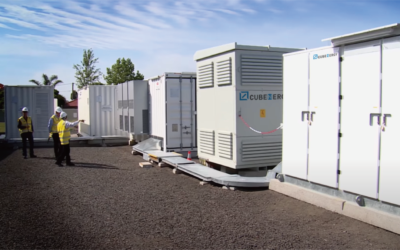
With grid-connected energy storage a relatively new technology, stakeholders are yet to fully understand many of the risks and business opportunities it presents, DNV GL’s Dr Martijn Huibers has said.
Huibers, business leader in energy storage for the accreditation and certification house, writes in the latest edition of PV Tech Power that diverse aspects of the energy storage business, from using grid-scale energy storage to tackle multiple applications, sizing a system correctly and mitigating risks around battery degradation are all relatively new issues that the industry is learning to navigate.
Enjoy 12 months of exclusive analysis
- Regular insight and analysis of the industry’s biggest developments
- In-depth interviews with the industry’s leading figures
- Annual digital subscription to the PV Tech Power journal
- Discounts on Solar Media’s portfolio of events, in-person and virtual
Or continue reading this article for free
DNV GL published GRIDSTOR, a recommended practice guide for energy storage technologies and applications, in early 2016, with an updated version due out this quarter. With eight industry stakeholders and 36 reviewing parties contributing to the so-called ‘Joint industry project’, DNV GL claims GRIDSTOR is aimed at creating a “common language” for discussing technical and safety standards.
Volume 12 of PV Tech Power, Solar Media’s technical journal for the downstream sector of the solar PV industry, features Storage & Smart Power, a dedicated section brought to you in association with Energy-Storage.News. ESN commissioned Huibers and colleague Paul Raats, a DNV GL senior solar energy consultant, to write about and shed light on how GRIDSTOR helps stakeholders get to grips with the fast-emerging sector.
There are over 200 guidance documents of various kinds around the world that can be applied to grid-scale energy storage systems or components, Huibers points out in the article, but GRIDSTOR is the first concerted attempt to be a “single comprehensive standard that covers all relevant aspects”, aimed at utilities, investors, developers and others.
“With all industry stakeholders being able to rely on independent risk mitigation, the grid-scale energy storage market is accelerated, in turn further enabling other energy transition technologies – like photovoltaics, just to name one,” Dr Martijn Huibers writes.
You can download ‘Grid-connected energy storage: implementation and risk management’ by Dr Martijn Huibers and Paul Raats, DNV GL, here.
You can download the entire issue of PV Tech Power Vol. 12, including Storage & Smart Power, presented by Energy-Storage.News, here.







